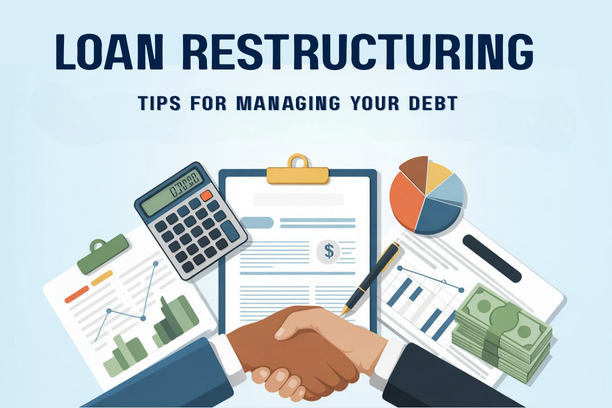For many Filipinos, securing a home loan is the most significant financial decision they will ever make. While getting a bank’s approval is a reason to celebrate, a far more important question must be answered first: “What can I truly afford?” The ability to make your monthly home loan payments comfortably and sustainably, without compromising your lifestyle or financial security, is the ultimate goal. This comprehensive guide provides a practical, step-by-step framework for assessing your ability to pay a home loan. We will break down the key financial metrics that lenders use, explain how to calculate them yourself, and provide essential tips to ensure you are not just approved for a loan, but are also financially ready for the long-term commitment of homeownership.
1. The Foundation of a Responsible Home Loan
Before you start hunting for your dream house or filling out application forms, it is crucial to perform a candid self-assessment of your financial health. This is a vital step that can save you from future financial stress.
Why a Self-Assessment is More Important Than a Bank’s Approval
A bank’s loan approval is based on a set of standardized metrics designed to mitigate their risk, not to guarantee your comfort. The amount a bank is willing to lend you and the amount you can comfortably afford to pay are often two very different numbers.
- Bank’s Perspective: Lenders want to see a reliable income source and a healthy credit history. Their primary concern is that you will not default on your loan. They use formulas like the Debt-to-Income (DTI) ratio to ensure that your housing-related expenses do not exceed a certain percentage of your gross income.
- Your Perspective: Your financial comfort is not just about meeting a bank’s minimum requirements. It’s about having enough money left over each month after paying all your bills to save for the future, handle emergencies, and enjoy a reasonable lifestyle. A self-assessment helps you determine if the loan fits into your real-life budget, not just a lender’s formula.
By taking the time to honestly answer the question, assessing your ability to pay a home loan, you empower yourself to choose a loan that fits your reality, not one that stretches you to your financial limit.
The Financial Metrics Lenders Look For
To understand what you can afford, you must first understand the language of the lenders. The key metrics they use to evaluate your loan application are:

- Gross Monthly Income (GMI): This is your total monthly income before any deductions for taxes, SSS, PhilHealth, or Pag-IBIG contributions. Lenders use this figure as the basis for their calculations because it represents your full earning capacity.
- Net Disposable Income (NDI): This is the money you have left over after all your non-discretionary expenses, such as taxes and mandatory deductions, are accounted for. While not a primary metric for all lenders, it’s a critical figure for your personal budget.
- Debt-to-Income (DTI) Ratio: This is the most important metric. It is a percentage that compares your total monthly debt payments to your GMI. It tells the bank if you have enough income left over to take on a new debt, like a home loan.
These three metrics form the foundation of a bank’s decision, and by understanding them, you can perform your own pre-qualification before you even submit a single document.
2. The Debt-to-Income (DTI) Ratio: Your Key to Financial Readiness
The DTI ratio is a powerful tool for both lenders and borrowers. It provides a quick and clear picture of your current debt load and your capacity to handle a new debt.
How to Calculate Your DTI Ratio
Calculating your DTI is a simple, two-step process.
- Calculate Your Total Monthly Debt Payments: This includes the minimum monthly payments on all your existing debts. This can include:
- Credit card minimum payments.
- Car loan payments.
- Personal loan payments.
- Student loan payments.
- Any other recurring debt payments.
- Note: Do not include monthly expenses like utility bills, groceries, or subscriptions, as these are not considered “debt” in this calculation.
- Calculate Your DTI Ratio: Once you have your total monthly debt payments, simply divide that number by your GMI and multiply by 100 to get a percentage. The formula is:
Let’s use an example:
- Your GMI is PHP 80,000.
- Your monthly car loan payment is PHP 15,000.
- Your credit card minimum payment is PHP 5,000.
- Total Monthly Debt Payments = PHP 15,000 + PHP 5,000 = PHP 20,000.
- Your DTI Ratio = (PHP 20,000 / PHP 80,000) * 100 = 25%.
This 25% represents your current DTI ratio. To determine how a home loan would affect this, you would add the projected monthly amortization to your total monthly debt payments and recalculate the ratio. A solid DTI is a strong indicator of financial health when assessing your ability to pay a home loan.
The Golden Rule: The 30% Threshold
For lenders in the Philippines, a DTI of 30% to 35% is a widely accepted benchmark. This means that your total monthly debt payments, including the new home loan payment, should not exceed 30% to 35% of your GMI.
- Below 30%: This is an ideal range. It indicates that you have a low debt load and a significant portion of your income is available for other expenses, including a new home loan. Borrowers in this range are considered low-risk.
- 30% to 40%: This is a common and acceptable range for many lenders. It suggests that you can likely afford a new home loan, but your finances will need to be managed carefully. Your application will be scrutinized more closely.
- Above 40%: This is a high-risk category. A DTI ratio in this range suggests that a significant portion of your income is already allocated to debt, and a new home loan payment would likely put you at a high risk of default. In most cases, a DTI this high will lead to a loan rejection.
When performing your self-assessment, you should use this 30% rule as your own personal benchmark for affordability. If a loan pushes your DTI beyond this threshold, it may be a sign that you are borrowing more than you can comfortably afford, even if a bank is willing to approve it.
3. Beyond DTI: The Complete Financial Picture
While the DTI is a great starting point for assessing your ability to pay a home loan, it does not tell the full story. A truly responsible self-assessment must also account for your savings and the stability of your income.

The Non-Negotiable Savings: Down Payment and Closing Costs
A home loan requires a significant upfront financial commitment. Having these funds saved up is a prerequisite for any application.
- Down Payment: Most banks and Pag-IBIG require a down payment of at least 10% to 20% of the property’s value. This is a non-negotiable lump sum that you must have saved before the loan can be approved. A larger down payment can reduce your principal and monthly amortization, making the loan more affordable.
- Closing Costs: These are the fees and taxes associated with closing the loan, such as Documentary Stamp Tax, mortgage registration fees, transfer taxes, and other bank fees. These can add up to 3% to 5% of the property’s value and are almost always paid out-of-pocket, separate from your down payment.
A solid self-assessment must confirm that you not only have enough income for the monthly payments but that you also have the necessary savings for these upfront costs.
The Cushion for Security: Building an Emergency Fund
Homeownership is a long-term commitment that comes with its own set of unpredictable expenses. A responsible homeowner must have an emergency fund to cover these unforeseen costs.
- Unforeseen Expenses: A broken pipe, a leaky roof, or a new appliance can cost tens of thousands of pesos. These are expenses that homeowners must be prepared for.
- Job Loss or Income Reduction: An emergency fund provides a crucial safety net in case of a job loss or a temporary reduction in income. It can help you continue to make your mortgage payments for several months while you get back on your feet.
- The Recommended Amount: Financial experts recommend having an emergency fund equivalent to at least three to six months’ worth of your total monthly expenses, including your new home loan payment.
A self-assessment that does not include the need for an emergency fund is incomplete. The presence of this financial cushion is a strong indicator of your long-term ability to sustain a home loan.
4. A Practical Worksheet: Putting It All Together
To help you with your self-assessment, here is a simple worksheet you can use to determine what you can truly afford.
A Step-by-Step Financial Self-Assessment
Follow these steps to get a clear picture of your financial readiness:
- Monthly Income:
- Gross Monthly Income (GMI): PHP _____________________
- Monthly Debt Payments:
- Car Loan: PHP _____________________
- Credit Card Minimums: PHP _____________________
- Personal Loans: PHP _____________________
- Other Debts: PHP _____________________
- Total Monthly Debt Payments: PHP _____________________
- Calculate Your DTI:
- DTI Ratio = (Total Monthly Debt Payments / GMI) * 100 = _____________________ %
- Determine Your Affordability:
- Maximum Home Loan Amortization: To stay within the 30% DTI rule, your total debt payments including your new home loan should not exceed 30% of your GMI.
- Let’s say your GMI is PHP 100,000. Your 30% DTI threshold is PHP 30,000. If your current debt is PHP 10,000, your maximum home loan amortization should be no more than PHP 20,000.
- Using this figure, you can use an online calculator to see what loan amount you can get.
- Check Your Savings:
- Down Payment Savings: PHP _____________________
- Closing Costs Savings: PHP _____________________
- Emergency Fund Savings: PHP _____________________
The Dangers of Over-borrowing: A Cautionary Tale
Failing to properly assess your ability to pay can lead to serious consequences. Over-borrowing can result in:
- Financial Strain: Every month becomes a struggle to make ends meet, leaving no room for savings, leisure, or emergencies.
- Risk of Foreclosure: If you fall behind on your payments, you risk losing your home and your down payment.
- Lifestyle Changes: You may be forced to give up hobbies, travel, or other aspects of your lifestyle to keep up with your payments.
A responsible self-assessment is the best way to prevent these outcomes.
Conclusion
Assessing your ability to pay a home loan is the most crucial step in your homeownership journey. By going beyond a bank’s approval and using a self-assessment framework that includes your DTI ratio, your savings, and your emergency fund, you can make a truly informed and responsible decision. A home is a long-term investment, and by ensuring that it fits comfortably within your budget, you are not just buying a house; you are securing your financial future and building a stable foundation for your family.













